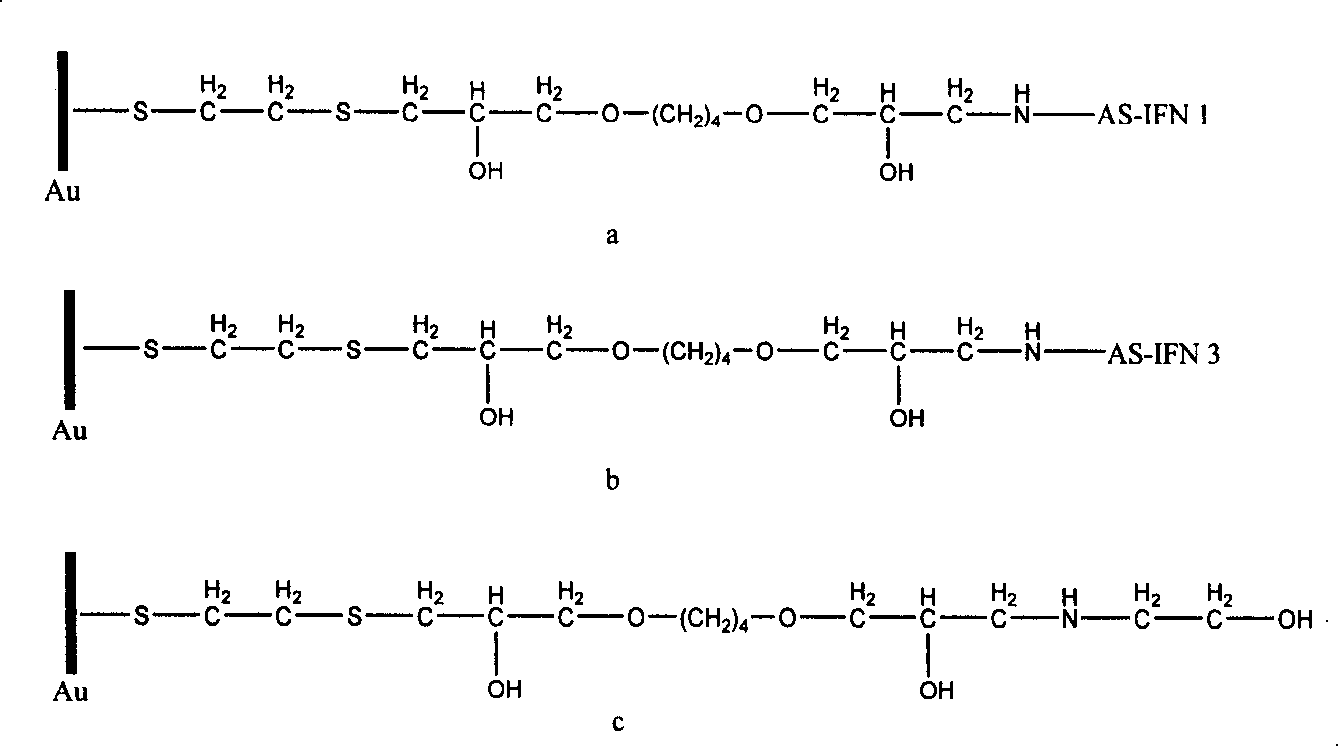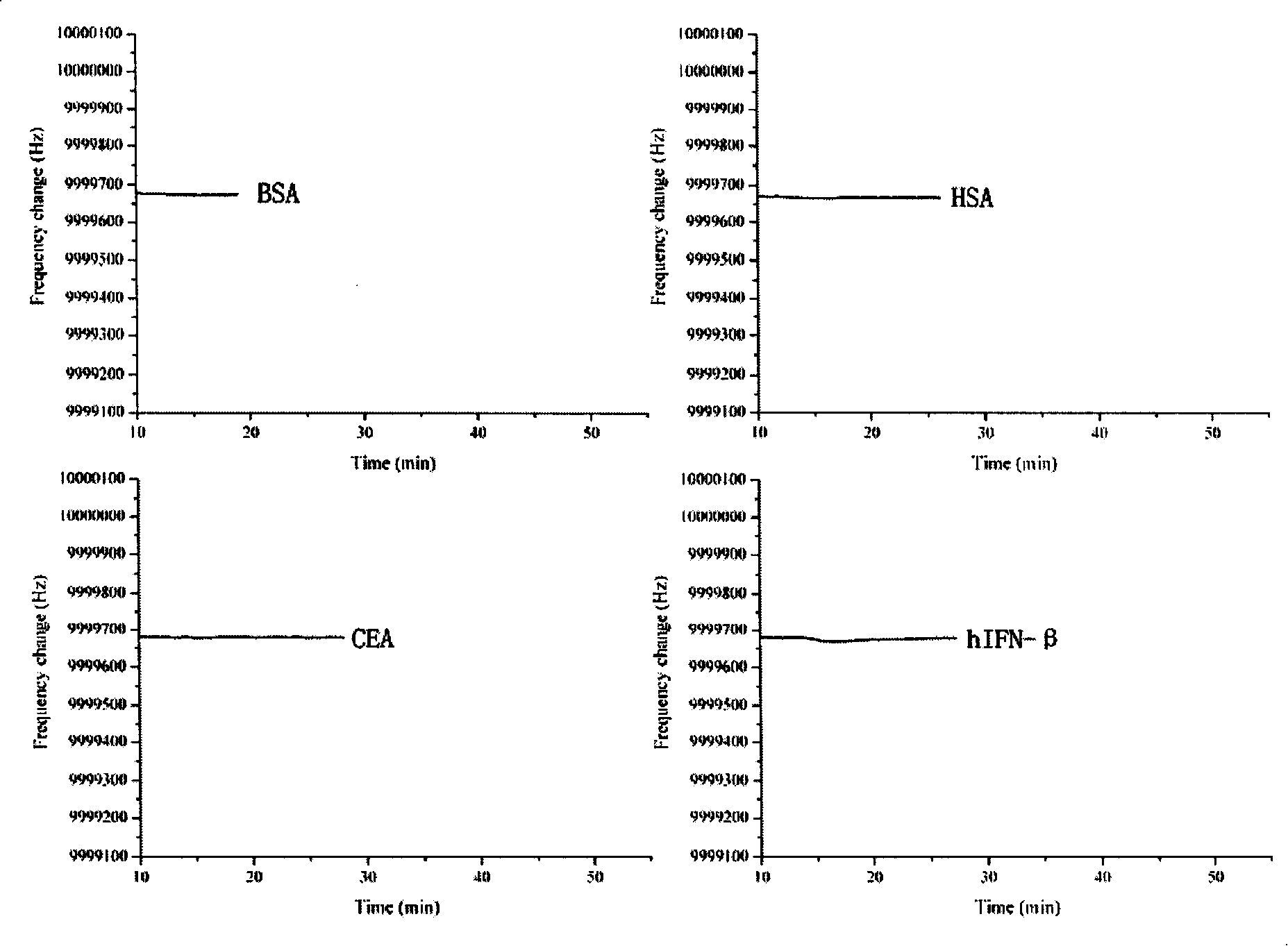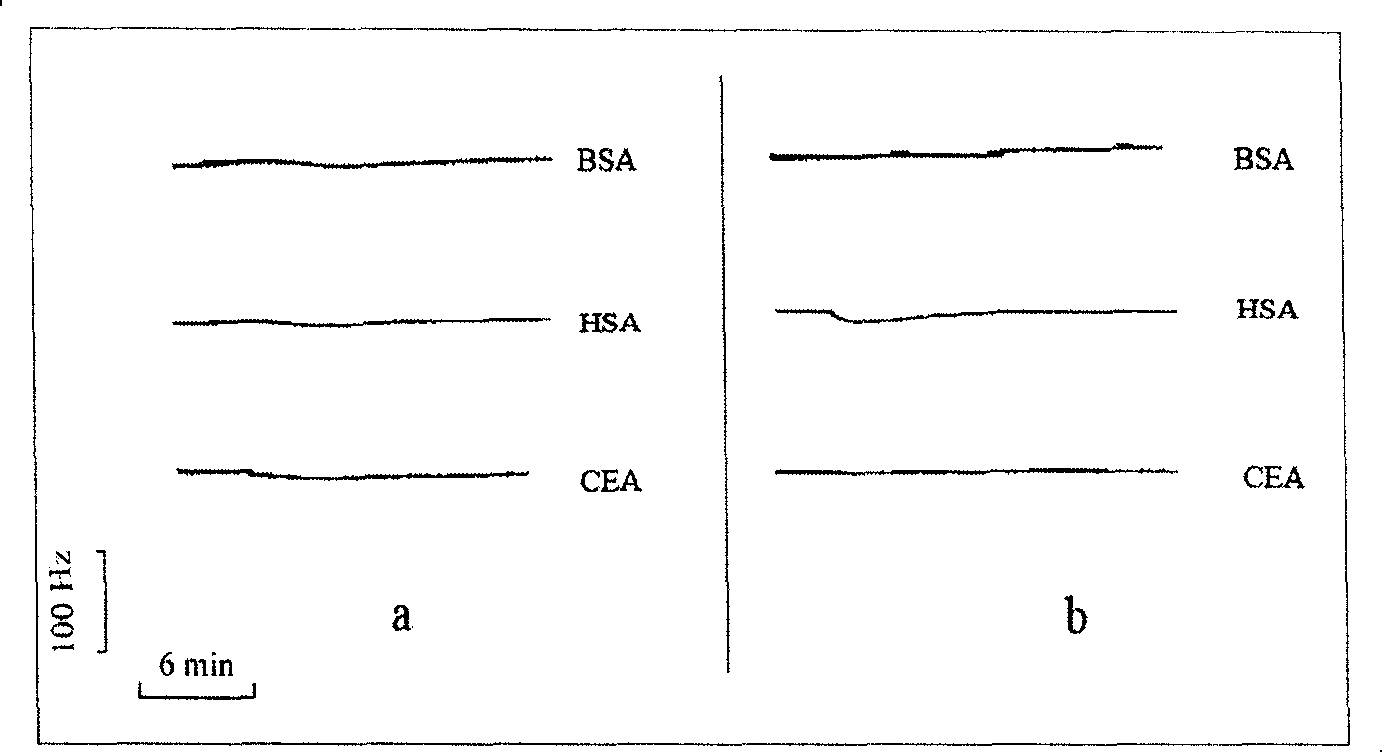Biologic sensor for detecting human beta interferon and its special polypeptide
A biosensor and interferon-beta technology, applied in the field of biosensors and their special peptides, can solve the problems of denaturation and inactivation, high price, and decline in biological activity, and achieve good selectivity and good reproducibility
- Summary
- Abstract
- Description
- Claims
- Application Information
AI Technical Summary
Problems solved by technology
Method used
Image
Examples
preparation example Construction
[0032] The preparation of the biosensor is carried out as follows:
[0033] Through the self-assembly of 1,2-ethanedithiol on the surface of the wafer gold electrode, the surface of the electrode is brought with mercapto groups; under weakly alkaline conditions, the mercapto groups are reacted with diepoxy 1,4-butanediol diglycidyl ether, and the gold electrode The surface is modified by epoxy groups; the small molecule recognition element antisense peptide AS-IFN 1 or AS-IFN 3 can be modified to the surface of the gold electrode through the reaction of its amino group and epoxy groups, and a biosensor is obtained. Its structure is as figure 1 In the figure, (a) AS-IFN 1 immobilized wafer; (b) AS-IFN 3 immobilized wafer; (c) blank wafer.
[0034] In order to control the loading amount of the polypeptide, its resonance frequency was measured before and after immobilization, and the amount of bound substance was calculated according to the Sauerbray equation. For a 10 MHz quar...
Embodiment 1
[0041] Embodiment 1, the preparation of biosensor
[0042] Take a 10MHz AT-cut piezoelectric quartz wafer with a diameter of 12.0mm, double-sided gold-plated electrodes, and an electrode diameter of 6.0mm. With Piranha solution (concentrated sulfuric acid: 30% H 2 o 2 =3:1, v / v), and then carefully washed with ethanol and three-distilled water respectively, and dried for later use. Immerse the cleaned wafer in 5% ethanol solution of ethanedithiol, keep it in the dark for 2 hours, wash it with ethanol and triple distilled water, and then immerse it in 1mL 1,4-butanediol diglycidyl ether and 4mL pH 9.5 0.1mol / LNa 2 CO 3 In the mixed solution composed of buffer solution, react at 40° C. for 4 hours, stop the reaction, rinse with water, and obtain a modified wafer. The antisense peptide AS-IFN1 was dissolved in a pH 10.0 buffer to make a 2 mg / ml solution, which was dropped onto the surface of the modified chip electrode with a micro-syringe, and reacted at 4°C for 20 hours. ...
Embodiment 2
[0044] Embodiment 2, the specificity experiment of biosensor
[0045] The blank wafer was fixed in the QCM flow cell with an O-ring rubber seal, and the modified side was in contact with the solution and the other side was placed in the gas phase. The mobile phase is 20mmol / L phosphate buffer, pH 7.4, and the flow rate is 30-90μL / min. Inject 100 μL of human beta interferon, bovine serum albumin (BSA), human serum albumin (HSA) and chicken ovalbumin (CEA) protein solutions with different concentrations through the six-port injection valve, and record the sensing spectrum, such as figure 2 Shown (mobile phase: 20mmol / L phosphate buffer (pH 7.4); flow rate: 60μL / min; protein concentration: 1.0mg / mL; injection volume: 100μL). The results showed that human beta interferon and other three proteins had no non-specific adsorption on the blank chip.
[0046] The human interferon-beta biosensors with AS-IFN 1 and AS-IFN3 as ligands were fixed in the QCM flow cell with an O-shaped rub...
PUM
 Login to View More
Login to View More Abstract
Description
Claims
Application Information
 Login to View More
Login to View More - R&D
- Intellectual Property
- Life Sciences
- Materials
- Tech Scout
- Unparalleled Data Quality
- Higher Quality Content
- 60% Fewer Hallucinations
Browse by: Latest US Patents, China's latest patents, Technical Efficacy Thesaurus, Application Domain, Technology Topic, Popular Technical Reports.
© 2025 PatSnap. All rights reserved.Legal|Privacy policy|Modern Slavery Act Transparency Statement|Sitemap|About US| Contact US: help@patsnap.com



